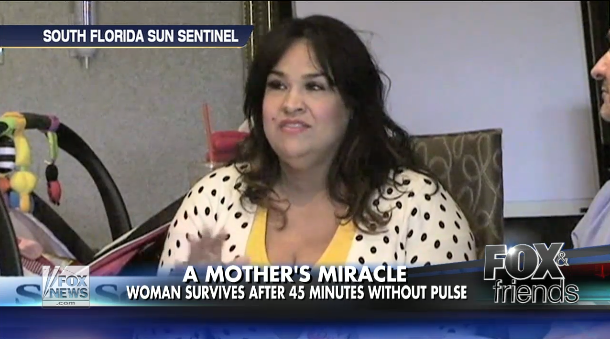Florida Woman Survives C-Section Complications After No Pulse For 45 Minutes

A Florida mother who underwent a routine cesarean section is now at home caring for her baby, despite major scares just over a month ago when the woman lost a pulse for 45 minutes after giving birth.
Ruby Graupera-Cassimiro, 40, had a normal C-section late in September. But in the recovery room, doctors began to notice she wasn’t breathing. Fluid from her amniotic sac had flooded into her bloodstream, causing what’s known as an amniotic fluid embolism. The incoming fluid created a vacuum in Graupera-Cassimiro’s heart, ceasing circulation and lung function. For hours the medical team performed chest compressions to jump start her breathing.
“We had to intubate her immediately,” said Dr. Michael Fleischer, Graupera-Cassimiro’s gynecologist, to Fox News. “As soon she was intubated, we brought her back to the operating room. That’s when I came and I assessed her. Everything from the surgery went perfectly, so we weren’t worried about that. But we were worried that she had stopped breathing.”
Strangely, however, none of the various attempts to resuscitate her left visible wounds. The paddles the doctors used to defibrillate the heart left no burns from the shocks, the chest compressions left no bruising, and the lack of blood flow to the brain left no neurological damage. She was back at home in a matter of days.
Amniotic fluid embolisms are rare and not entirely understood. Generally, they occur in mothers over 35, during C-sections, and several other pregnancy-related complications. They occur between one in every 8,000 and one in every 80,000 deliveries, which means few doctors will ever come across one in their careers. When they do, sometimes science falls short.
“There's very few things in medicine that I've seen … that really were either unexplainable or miraculous,” Dr. Anthony Dardano, president of the hospital's medical staff, told the Florida Sun-Sentinel. “And when I heard this story, that was the first thing that came to my mind.”
Graupera-Cassimiro was taken off her life support machine a day after the incident, perhaps the only reasonable explanation for what the doctors and nursing staff have come to call “divine providence.” One of the only cases a medical staff will attempt to defibrillate the heart when it has no pulse is a case of pulseless ventricular tachycardia, a condition in which the ventricles of the heart can’t pump blood out to make a pulse. The muscle is moving but not beating.
While doctors have not determined the exact reasoning, Graupera-Cassimiro and her family are simply happy to have her home and healthy. “I don't know why I was given this opportunity,” she said, “but I'm very grateful for it.”



























